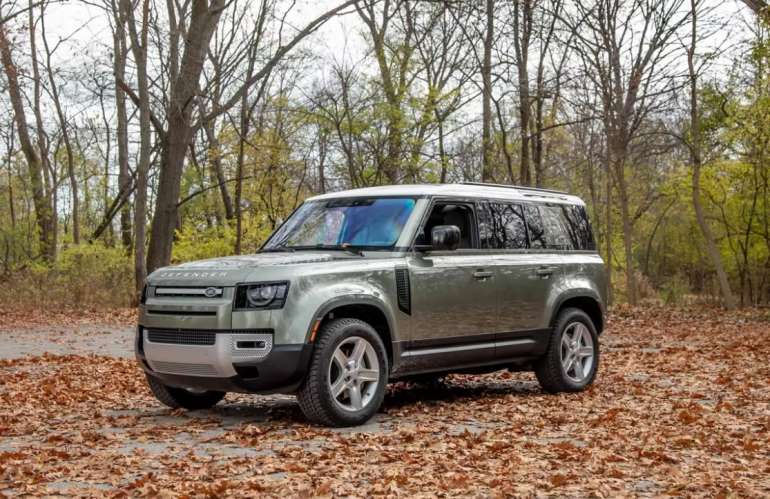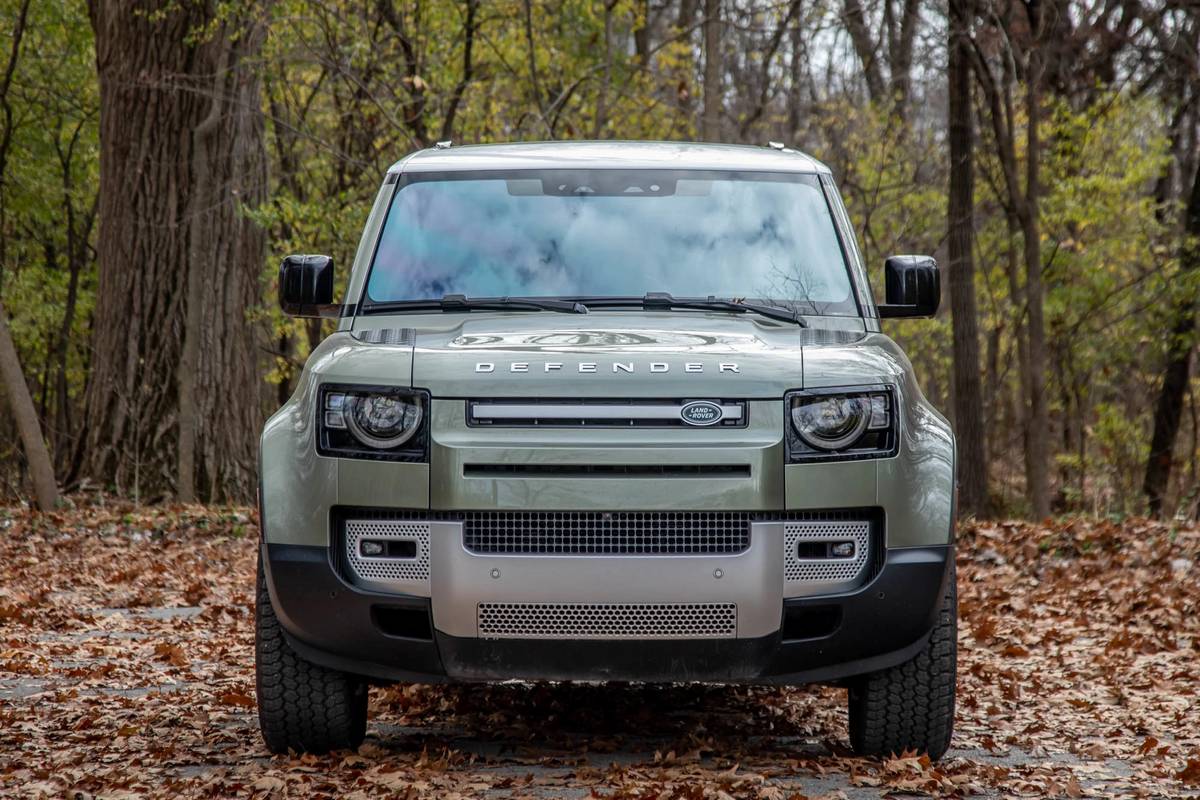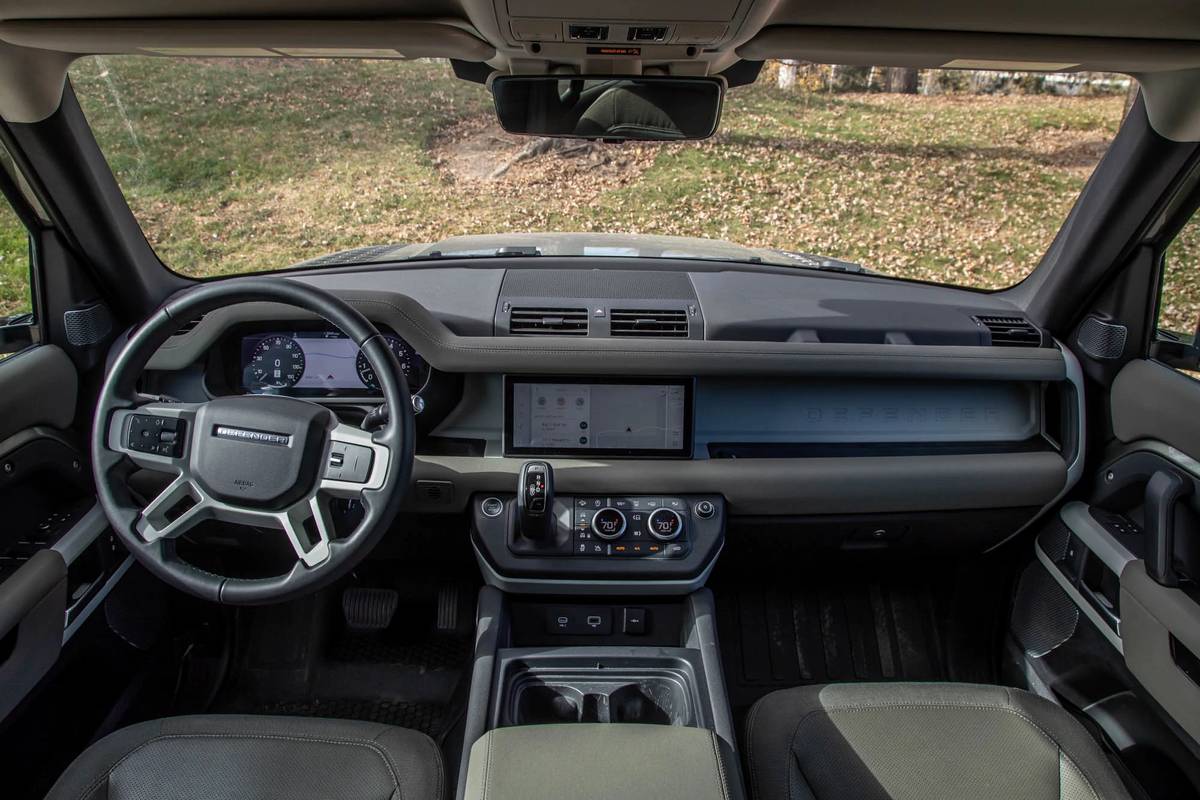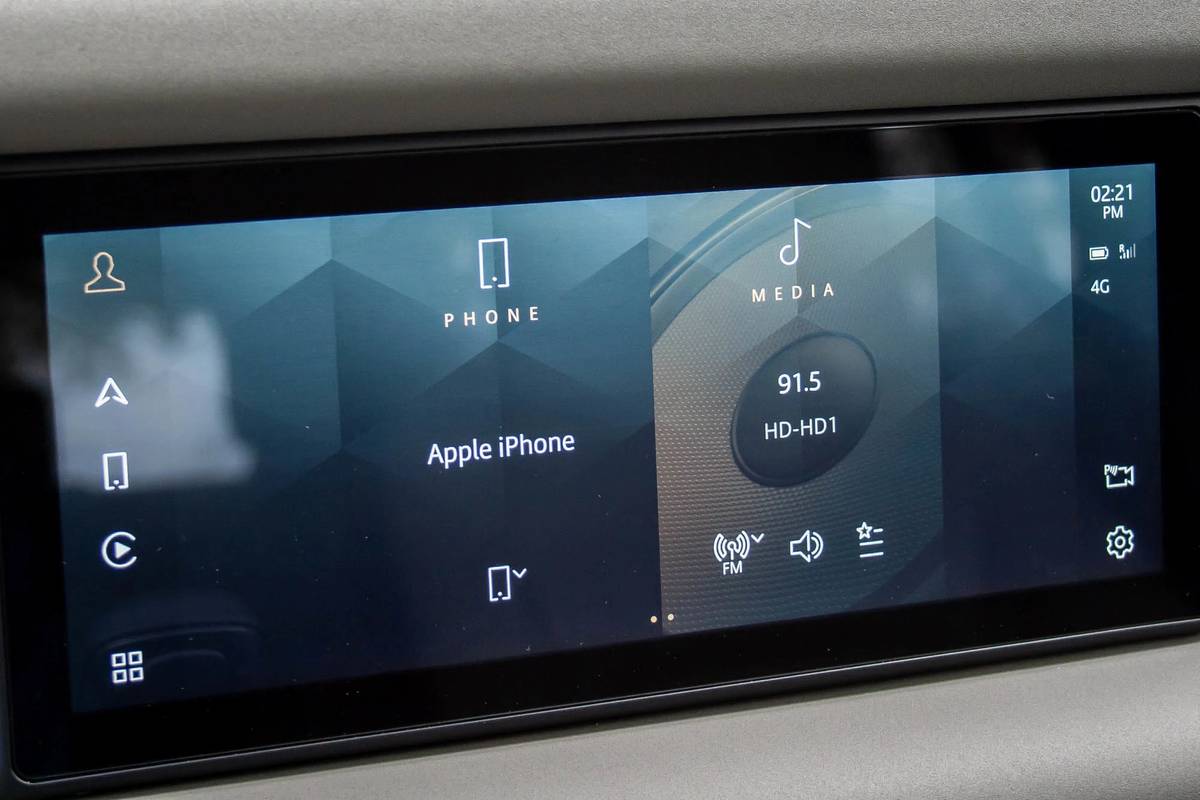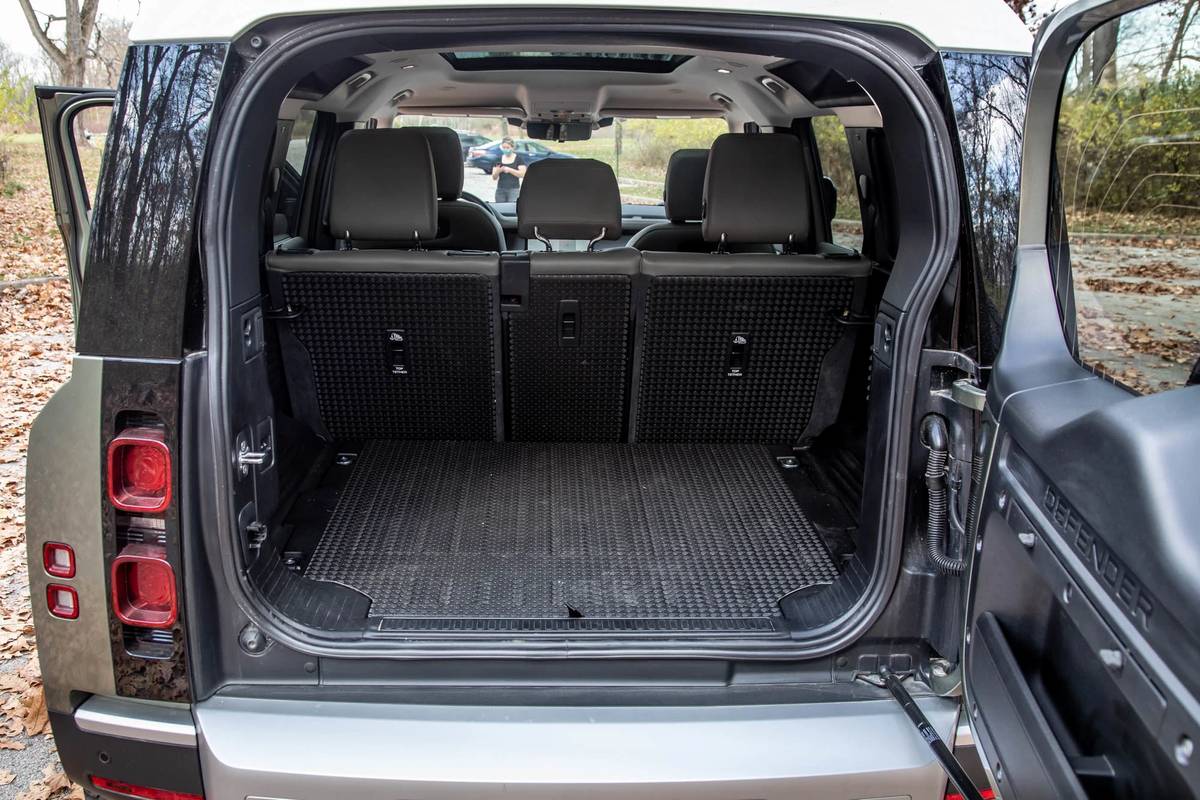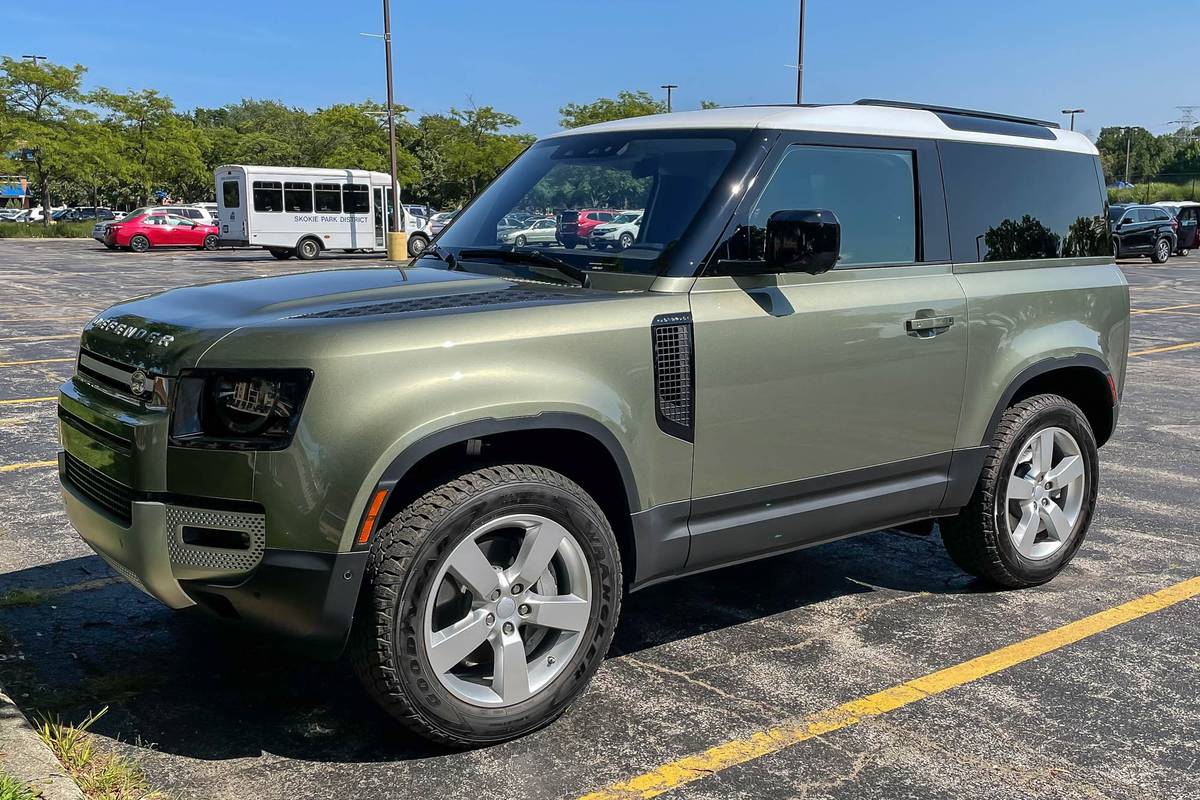The verdict: The Defender delivers modern Land Rover SUV qualities, like impressive power and extensive off-road technology, in a distinctive shape that plays off the past.
Versus the competition: For a mid-size luxury SUV, the Defender’s claimed off-road capabilities — including a 35.4-inch wading depth — are considerable. It’s also surprisingly nimble and refined on the street, though its design emphasizes ruggedness over traditional luxury cues.
Last sold in the U.S. for the 1997 model year, “Defender” is a legendary Land Rover nameplate that has embodied capability much the same way as Jeep’s “Wrangler.” More expensive than Land Rover’s entry-luxury compact SUVs but not as pricey as the brand’s family of Range Rover models, the Defender sits alongside the Discovery in Land Rover’s lineup.
The Defender is offered in two-door (90) and four-door (110) form. Our primary test vehicle was a 2020 four-door SE trim level with the optional mild-hybrid drivetrain, which features an inline-six-cylinder engine that’s both turbocharged and supercharged. We also spent some time in a 2021 two-door First Edition. The as-tested price of our SE version was $72,180, while the First Edition’s as-tested price was $66,475 (prices include a $1,350 destination charge).
We weren’t able to test the Defender off-road, but judging by the number of Land Rovers we see cruising around Chicago and its suburbs, the urban jungle is as natural a Land Rover habitat as an actual jungle. We’re looking forward to testing the Defender off-road in the future, but for now this review covers what it’s like as a daily driver.
Surprisingly Quick
The four-door Defender is a big, heavy vehicle that’s as tall and wide as some full-size SUVs. The six-cylinder’s 395-horsepower rating is nothing to sneeze at, but it feels like there’s even more power under the Defender’s hood; the engine delivers effortless acceleration that belies this SUV’s considerable bulk. It incorporates an electrically driven supercharger that increases boost pressure at low engine rpm, resulting in 406 pounds-feet of torque from 2,000 rpm. While it doesn’t have the kind of forceful high-speed passing power the Range Rover’s available supercharged V-8 produces, it’s still swift.
Both the mild-hybrid inline-six and the standard turbo four-cylinder pair with an eight-speed automatic transmission and permanent four-wheel drive. The automatic makes the most of the inline-six’s considerable power, and it never felt like it was in the wrong gear. The transmission is also responsive; press the gas pedal halfway down for more power when cruising on the highway and it immediately kicks down. Full-throttle kickdowns take a bit longer, however.
The mild-hybrid drivetrain makes about 100 hp more than the base four-cylinder and gets slightly better estimated gas mileage: It’s EPA-rated 17/22/19 mpg city/highway/combined versus the base engine’s 17/20/18 mpg rating. Both engines have better estimated fuel economy than the Lexus GX 460, another off-road-capable luxury SUV, which is powered by a 301-hp V-8 and rated 15/19/16 mpg.
Nimble, Too
Despite its size, the Defender doesn’t drive like a big SUV; it’s easy to maneuver and place where you want. It steers with a light touch, and steering response is direct and precise. The tall driving position affords commanding forward views, and the SUV feels poised whether you’re on suburban streets or the highway.
Like the top-of-the-line Range Rover, the Defender 110 has a standard air suspension, but this model’s ride quality is firmer and less forgiving. It’s not harsh, but I did feel breaks and bumps in the pavement — and that was with the available 20-inch tires set to their light load pressures of 34 psi in front and 36 psi in back, rather than their normal load settings of 47 psi in front and 50 psi in back. (Higher tire pressures tend to deteriorate ride quality.)
Less Luxury, More Utility
The original Defender and the models that preceded it were rugged, military-derived, no-frills vehicles. The new Defender’s interior has its share of luxury cues, but it’s not as plush as other Land Rovers.
That doesn’t mean its unique design cues aren’t cool. They are, and some of them are even functional. Exposed Torx-style screws on the doors and center console lend a bit of an industrial feel, and the recessed dashboard face creates a nearly vehicle-wide shelf for odds and ends. It’s just one of many storage areas in the Defender, which also has large door pockets and an open storage area where the center console meets the dash.
The Defender’s front bucket seats are comfortable, and the padded center console lid serves as a comfy armrest. The seats in our SE trim were finished in leather center sections trimmed with woven fabric, but full-leather seating is available.
Taller adults can ride comfortably in the four-door model’s second row, which has lots of headroom — even with the optional panoramic moonroof. The seat cushion and backrest aren’t adjustable in two-row models, but legroom is adequate. A two-seat third row is optional.
Smart Technology
Compared with the dual-screen control systems in some other Land Rovers, the Defender’s single 10-inch dashboard touchscreen and the physical air conditioning controls below it are refreshingly simple to use. The display runs Land Rover’s new Pivi Pro multimedia system, which has easy-to-navigate on-screen menus, crisp graphics and an intuitive navigation system.
The system also includes wired Apple CarPlay and Android Auto smartphone connectivity. CarPlay started immediately when I connected my phone to the USB port, and it makes the most of the widescreen display by using all the screen’s width.

